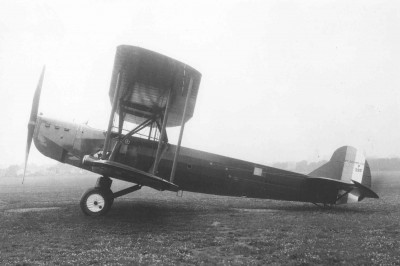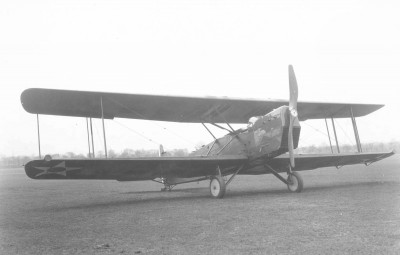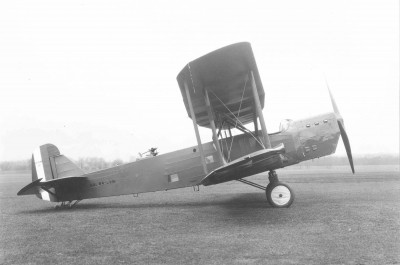| Název: Name: | Huff-Daland LB-1 Pegasus | Huff-Daland LB-1 Pegasus |
| Originální název: Original Name: | Huff-Daland LB-1 Pegasus | |
| Kategorie: Category: | bombardovací letoun | bomber aeroplane |
| Výrobce: Producer: | DD.MM.1923-DD.MM.1923 Huff-Daland Airplanes, Inc., Ogdenburg, New York DD.MM.1927-DD.MM.1927 Huff-Daland Airplanes, Inc., Bristol, Pennsylvania | |
| Období výroby: Production Period: | DD.MM.1923-DD.MM.1927 | |
| Vyrobeno kusů: Number of Produced: | 1 XLB-1 (23-1250) 10 LB-1 (26-376/385) | |
| První vzlet: Maiden Flight: | DD.MM.RRRR | |
| Osádka: Crew: | 4 | |
| Základní charakteristika: Basic Characteristics: | ||
| Vzlet a přistání: Take-off and Landing: | CTOL - konvenční vzlet a přistání | CTOL - conventional take-off and landing |
| Uspořádání křídla: Arrangement of Wing: | dvouplošník | biplane |
| Uspořádání letounu: Aircraft Concept: | klasické | conventional |
| Podvozek: Undercarriage: | pevný | fixed |
| Přistávací zařízení: Landing Gear: | kola | wheels |
| Technické údaje: Technical Data: | ||
| Hmotnost prázdného letounu: Empty Weight: | ? kg | ? lb |
| Vzletová hmotnost: Take-off Weight: | 5631 1) kg | 124151) lb |
| Maximální vzletová hmotnost: Maximum Take-off Weight: | ? kg | ? lb |
| Rozpětí: Wingspan: | 20.27 m | 66ft 6in |
| Délka: Length: | 14.07 3) m | 46ft 2in3) |
| Výška: Height: | 4.55 m | 14ft 11in |
| Plocha křídla: Wing Area: | ? m2 | ? ft2 |
| Plošné zatížení: Wing Loading: | ? kg/m2 | ? lb/ft2 |
| Pohon: Propulsion: | ||
| Kategorie: Category: | pístový | piston |
| Počet motorů: Number of Engines: | 1 | |
| Typ: Type: | Packard 2A-2540 o výkonu 597 kW dvoulistá dřevěná vrtule | Packard 2A-2540, power 800 hp two-blade wooden propeller |
| Objem palivových nádrží: Fuel Tank Capacity: | ? | ? |
| Výkony: Performance: | ||
| Maximální rychlost: Maximum Speed: | 193.1 3) km/h v 0 m | 1203) mph in 0 ft |
| Cestovní rychlost: Cruise Speed: | 167.4 km/h v ? m | 104 mph in ? ft |
| Rychlost stoupání: Climb Rate: | ? m/s | ? ft/min |
| Čas výstupu na výšku: Time to Climb to: | ? min do ? m | ? min to ? ft |
| Operační dostup: Service Ceiling: | 3399 4) m | 111504) ft |
| Dolet: Range: | 692 5) km | 4305) mi |
| Maximální dolet: Maximum Range: | ? km | ? mi |
| Výzbroj: Armament: | 2x pevný kulomet ráže 7,62 mm ve spodním křídle 1x dvojitý pohyblivý kulomet Lewis ráže 7,62 mm na hřbetě 1x pohyblivý kulomet Lewis ráže 7,62 mm v podlaze 1247 kg pum | 2x fixed .30 machine gun in the lower wing 1x flexible .30 Lewis twin machine gun, ventral position 1x flexible .30 Lewis machine gun, dorsal position 2750 lb of bombs |
| Uživatelské státy: User States: | | |
| Poznámka: Note: | XLB-1 s motorem Packard 1A-2540: 1) 4693 kg 2) 14,43 m 3) 194,7 km/h 4) 4397 m 5) 1513 km | XLB-1, 800 hp Packard 1A-2540: 1) 10346 lb 2) 47ft 4in 3) 121 mph 4) 14425 ft 5) 940 mi |
| Zdroje: Sources: | www.nationalmuseum.af.mil www.nationalmuseum.af.mil http://joebaugher.com/usaf_bombers/lb1.html | |
| Period | - |
| Producer | - |
| Type | Huff-Daland LB-1 Pegasus |
| Camouflage | - |
| Country | - |
| Pilot | - |
| Production No. | - |
| Serial No. / Evidence No. | - |
| Tactical Marking / Imatriculation | - |
| Name | - |
| Unit | - |
| Base | - |
| Date (DD.MM.RRRR) | DD.MM.RRRR |
| Author | - |
| Print size / 300 DPI | - |
| Published with authors permit | - |
| Author Website | - |
Prototyp XLB-1.


